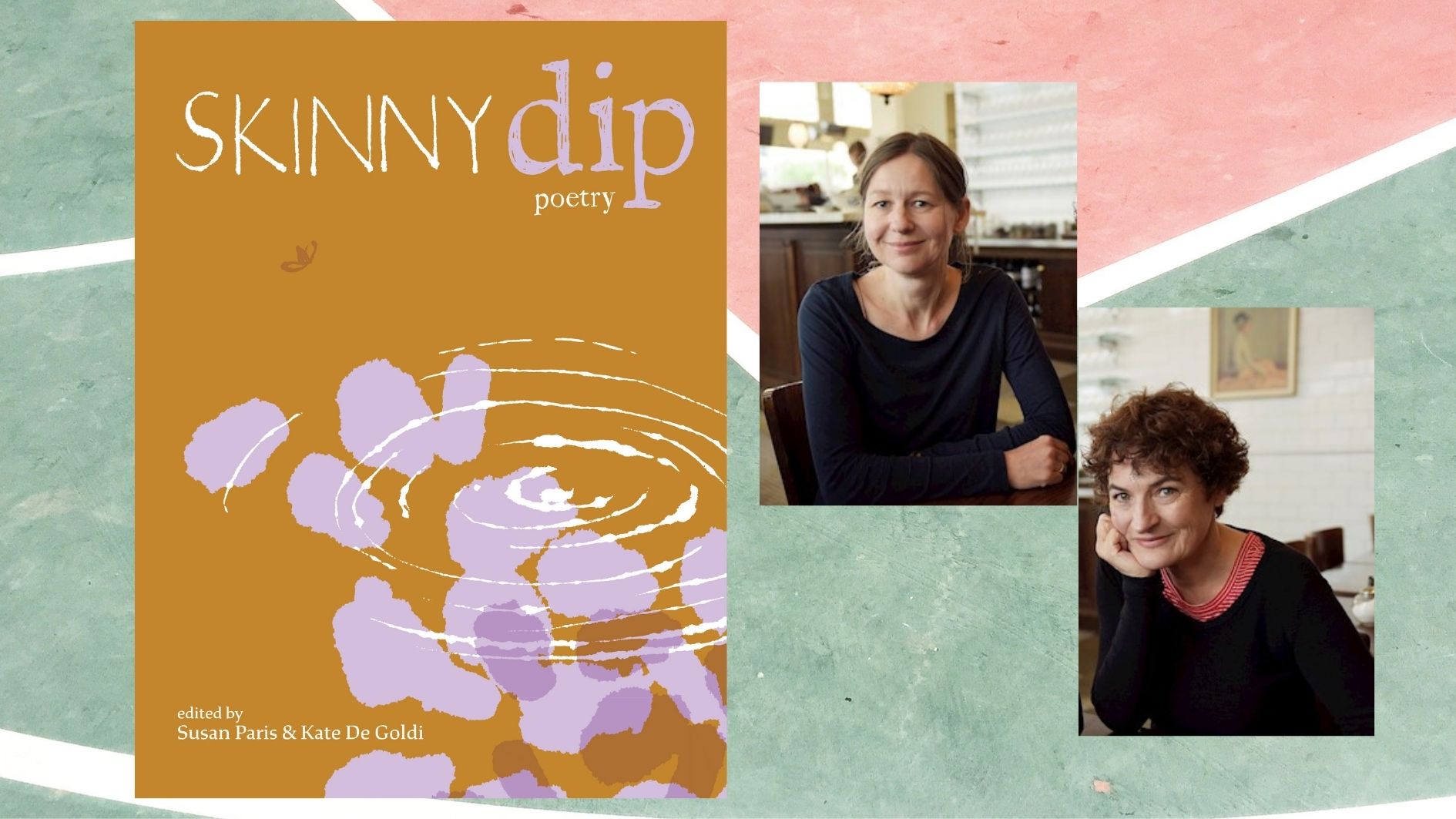Despite the number of world-class poets here in Aotearoa, it’s rare that a collection of contemporary poetry is published by a New Zealand publisher. Briar Lawry could not love it more.

In the late single digits, something happens to approximately ninety percent of young people. Is it part of puberty? Is it the looming knowledge of a change in school environment? Nobody knows. But when the time comes to talk to a tween or a teen about poetry—be it one-on-one in a bookshop or in front of an English class—you can bet that the eye rolls or groans will begin.
Poetry?! they moan. Do we HAVE to? These same kids who, a few years earlier, would lap up rhyming stories while sitting transfixed on the mat. A genuine quote from the reading log of a Year 9 student of mine reads: ‘Poems suck’. Most of my other students may not be so blunt, but the general consensus going into our poetry unit earlier this year was the same.
A genuine quote from the reading log of a Year 9 student of mine reads: ‘Poems suck’.
And honestly? I couldn’t blame them. Poetry feels like the Big Bad of English units for so many kids. Especially if you’re getting saddled with stuff by writers of the Male, Pale and Stale (and decades if not centuries dead) variety. I’m not saying that there’s not a place for the poets of yore. But in my mind, when you’re teaching students who don’t have the chance to opt out of a class, it’s important to cater to their interests and focus on relevance to their experience. It’s not pandering, it’s avoiding alienation.
Which brings me to Skinny Dip. News of its planned publication made me excited—getting my hands on a copy made me giddy. On the shelves of Little Unity (and any bookshop I’ve worked in, for that matter…) and our school library, poetry for young people is for really young people. Things go from Lear and Dahl and Prelutsky straight to Larkin, Dickinson and Poe, with no pause for breath in the middle grade or YA years. Skinny Dip is the tonic I craved.

Skinny Dip is published by Annual Ink, Susan Paris and Kate De Goldi’s publishing baby that sits tucked under the wing of Massey University Press. It’s an anthology for Aotearoa’s young people, written by some of Aotearoa’s best contemporary poets. These are celebrated poets, the kinds who do things like win prizes and get laureateships and have collections published here and abroad. And they aren’t watering themselves down for this collection, they are simply tweaking their topics and demographic pitch.
The result? Magic. You know how some music journalists will do track-by-track reviews of new albums? This feels like the kind of book you want to do that for— but there are 36 pieces in the collection and that feels a bit extreme. Instead, let’s look at some highlights.
You know how some music journalists will do track-by-track reviews of new albums? This feels like the kind of book you want to do that for…
The book’s four sections are labelled as the school year’s terms. Term 1 starts with Vanessa Mei Crofskey’s free verse offering, ‘school sucks but at least ur friends are there’ and it’s transporting, dragging you back to mid-January hot-weather days of nothing left to do—so you may as well start thinking about the small gifts of the forthcoming new school year like ‘the lush red first kiss of a fresh 1B5’.
essa may ranapiri’s ‘kutu’ is a found poem par excellence, getting into the nitty gritty of lice life with eight little lines. The villanelle ‘School caretaker’ by Tim Upperton speaks from the heart that I can imagine hides within every gruff caretaker I’ve ever encountered. ‘Class 3B, 1974 (front row, third on left)’ by Jane Arthur is a free verse time capsule into class photo days of the past, complete with acne and blinks.
Term 2 opens with free verse again, this time from Ashleigh Young, with the excellent ‘People Give Me Advice about Dealing with My Frenemy’. The poem is as brilliant as you’d expect from the title, with moments like: ‘I told him that if all of Earth’s history were compressed / into a single day, he would have been alive / for about 0.0001 seconds.’ My pre-teen past self could only dream of having such sick burns up her sleeve.
‘I told him that if all of Earth’s history were compressed / into a single day, he would have been alive / for about 0.0001 seconds.’
Freya Daly Sadgrove tackles the sestina (brave!) in ‘Oral History Project: Aunty Madds remembers when they got rid of five-cent coins’, with its after-school activities and schoolkid dairy prowl. The title of Freya’s first collection – Head Girl – had such exquisite scholastic bravado to it, and that, combined with her experience as a children’s bookseller made her an obvious and excellent choice for inclusion.
In Term 3, acrostic poems even get their moment to shine, which is only right in a collection like this. ‘Exercise 1.3: Write an Acrostic’, by Kōtuku Titihuia Nuttall, is an extraordinary bit of evocation within the constraints of the form. The ‘Never quite dry’ school jumpers is a clammy winter memory. There’s dialogue poetry too, in playwright Victor Rodger ‘Sole to Sole’, feeling like it could have been lifted directly from a lunchtime playground. And Renee Liang’s free verse ‘the bed in the sick bay’ is the sweetest poem I’ve ever read that contains the phrase ‘Bristol Stool Scale’.
The end of the school year, Term 4, features the third of three Skinny Dip snippets from Bill Manhire – a turn to free verse following rondel ‘History Lesson’ and strike-out poem My First Big Hit’. ‘There’s always someone’ takes us to the sports field, with all kinds of ‘someone’s’ integral to the P.E. experience, right down to the whistle-wielding, rule-agnostic teacher.

But perhaps the best moment of the whole collection is the final piece, something uniquely of this whenua, so very funny while also sombre. Anahera Gildea’s ‘Kua Tangi te Pere | The Bell Has Rung’ is a karakia presented first in te reo Māori and then te reo Pākehā, with pleas to be released from the school day starting stanza after stanza, folded into karakia convention with its sweeping phrasing tying together te taiao me ngā atua.
My specificity with regard to form throughout this piece is not some weird poetic power play. In fact, it’s woven throughout the book and I gasped in delight when I first noticed the special little footers at the end of each piece. Each poem has its poetic form identified, and at the end of the book, there’s a section explaining the different forms.
My specificity with regard to form throughout this piece is not some weird poetic power play. In fact, it’s woven throughout the book . . .
An appendix like that is an absolute dream for any poetry enthusiast or English teacher, and in turn, inspired the title of the piece. Because if any poetry collection in recent times deserves its own ode – ‘a lyric poem … written to praise anything that took a poet’s fancy’— it’s this one. I foresee copies in school libraries throughout the country, hot demand National Library class sets and many a launching point for creative writing exercises. Do yourself and the rangatahi in your life a favour and get a copy.


Briar Lawry is an English teacher and writer from Tāmaki Makaurau. She worked in bookshops for years, most notably Little Unity, and judged the NZCYA Awards in 2020. She was also one of the editors of The Sapling between 2019 and 2023.



